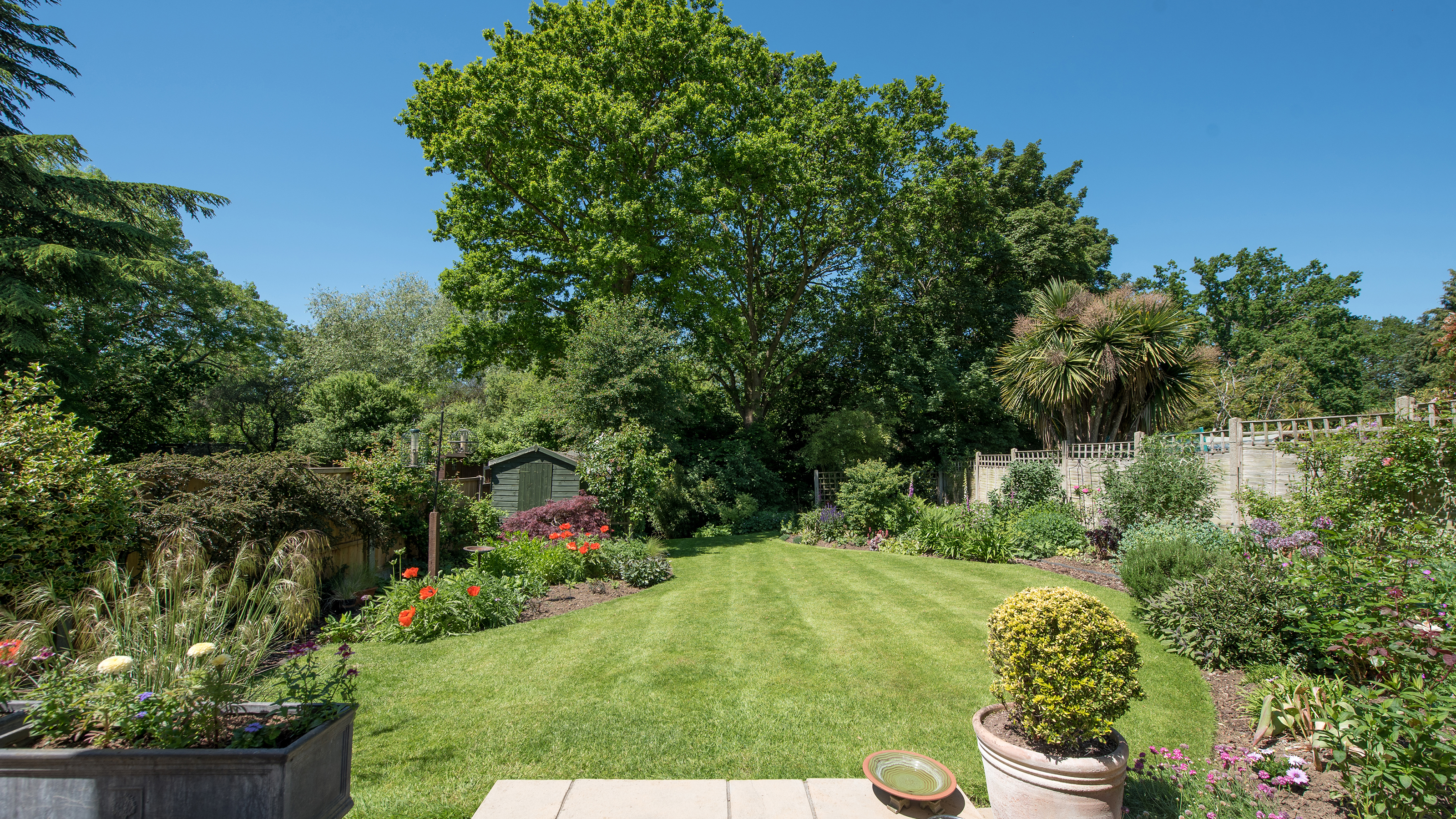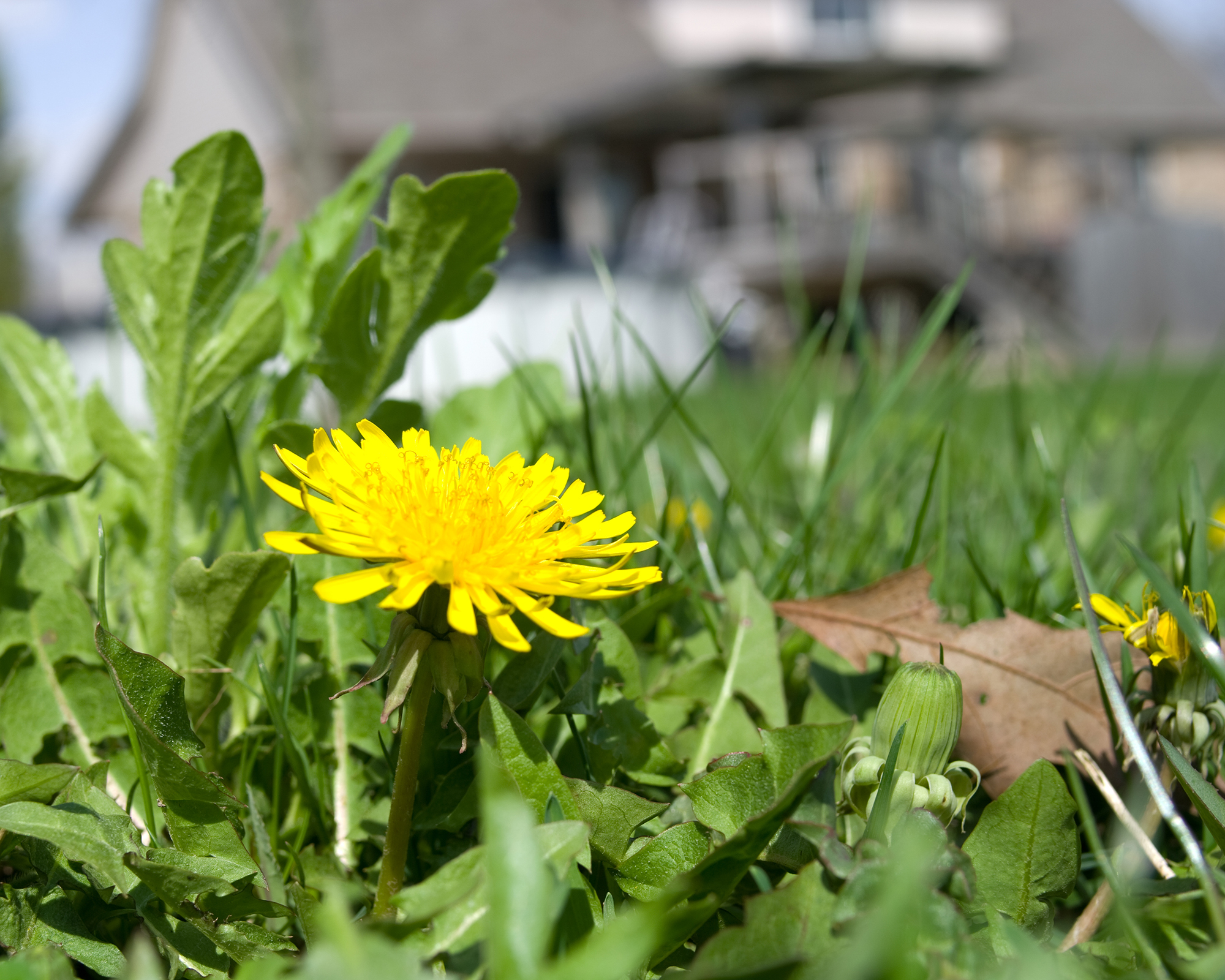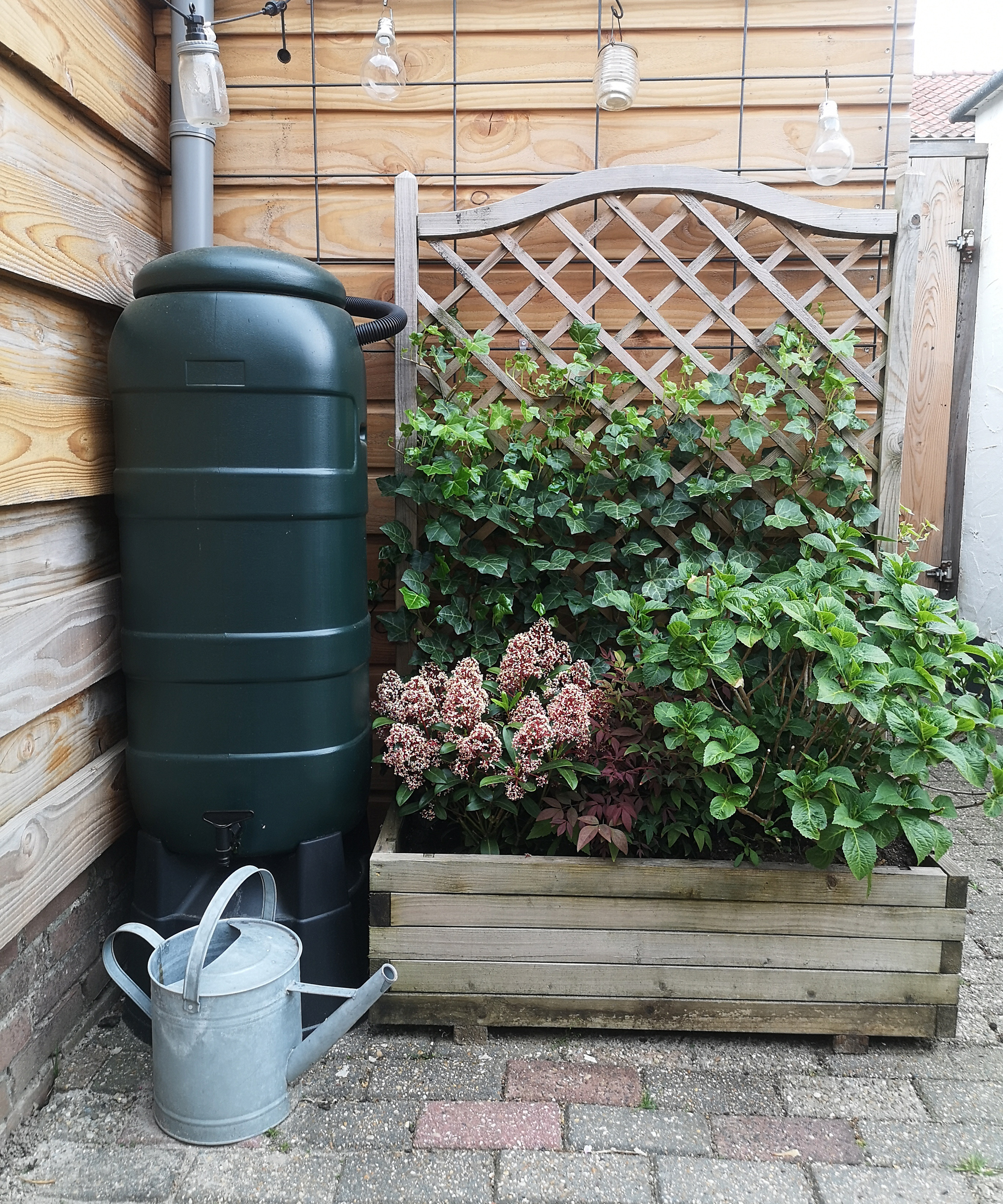Summer lawn care: 15 tips to prepare your grass for hot weather
Transform a parched patch into verdant grass with these summer lawn care tips to give your turf some TLC


Summer lawn care is a must if you want your neighbors to be envious of your backyard. Whether you've invited friends round for a few cocktails, or are hosting a barbecue – no one wants to look out onto a dehydrated grassplot or derelict ground.
But we get it: lawn care in summer is the last thing you want to do. It's hot, the kids are bugging you for a couple of dollars for the ice cream truck, and you'd rather crack open a beer than dig out your best lawn mower out of the garage. So, instead of breaking out the big tools immediately, let us show you how to tend to your yard over time. That way, you won't have to hire expensive pros, and you'll save hours of time too.
Note that spring gardening 'rules' differ from summer lawn care, so it's important that you respect the varying levels of humidity and heat, and how these conditions will affect how you treat your lawn.
But, if you're totally new to lawn maintenance, take a look at our gardening for beginners guide. While swapping real grass for faux foliage might seem the easier way out, so many experts are calling for a ban on artificial grass (and we are too!)
1. Soften hard soil areas with soap
It can be so disappointing to see dead grass in your backyard. But just because your soil has dried out, don't lose hope on a healthy lawn. Take steps to turn this barren landscape into a fertile foundation with dish soap... Yes really. Pick from one of the best washing-up liquids just to be safe.
Expert house flipper, John Maxim, who has fixed and flipped over $500 million of international real estate including outdoor spaces, says: 'Use a spray bottle or a good garden hose attachment to soften hardened rough patches with Dawn or ivory soap and water.'
'This will penetrate the soil easier, allowing your trouble patch to get water easier. Warning this isn't ideal for all types of grasses and if the soap bubbles then quickly spray away with only water.'
Get small space home decor ideas, celeb inspiration, DIY tips and more, straight to your inbox!

2. Spot treat grassy weeds before they spread
'If you spot a troublesome weed before it takes hold, you can take steps to kill it or at least keep it from spreading by using pre-emergent herbicides and fertilizers.'
'This will save your lawn's health and prevent the future growth of unwanted plants.'
Shop for the best weed killer or discover how to get rid of weeds naturally with baking soda, Castille soap (which you can easily get on Amazon), or salt/vinegar solution.
Maxim is a fan of treating your grassplot with a condiment cocktail. He advises that you use: 'one gallon of vinegar to a cup of salt and about a tablespoon of dish soap! Spray directly to the weed. Try to avoid putting around plants and green grassy areas as salt doesn't mix well for thriving spaces.'
3. Grow heat-tolerant grass
Wait, what? There's more than one type of grass? Yep. By choosing the right type of grass, you have a better chance of keeping a healthier-looking lawn that won't go turn to straw in the heat.
'A good way to take care of your lawn is by growing grass that is heat-tolerant, ' says Trevor Lively, president of Blue Jay Irrigation company.
'Fertilize warm-season grass on your lawn in the early summer, when the temperature is around 70 degrees Fahrenheit or less. Your grass will be more heat and drought-resistant if you fertilize at the correct time.'
'You run the danger of scorching your lawn if you apply too much. Because grass is already stressed during these months, use caution while applying it. Use a fertilizer designed specifically for summer feedings and follow the manufacturer's directions to the letter. If your grass is cool-season, don't fertilize it in the summer. Fertilizing cool-season grass is best done in the spring and fall.'
4. Overseed your lawn the right way
Overseeding is summer lawn care 101. Essentially what you're doing is sowing new grass seed into your existing lawn to essentially top it up and fill in any bald spots or patches.
'Winter can be unkind to lawns making it look thin or patchy, so summer is a great time to repair these damaged areas by overseeding.' says Chris McIlroy, lawn expert at The Grass People.
'If you want to try your hand at overseeding, there are a few steps to follow. Firstly, make sure you take the time to prep the lawn, this includes weeding the lawn and removing any debris such as boulders or stones.'
'Next, it’s time to scarify [remove surface thatch or moss from a lawn] and fertilize the lawn with a quick-release fertilizer. Lastly, moisten the soil and sprinkle the seed, and water and then roll the lawn. The final step is to sit back and enjoy your luscious green lawn.'
If you want to know how to seed a lawn, you can grow your knowledge with our guide.
5. Sharpen your lawn mower blades
You wouldn't expect your hairstylist to use a blunt pair of scissors at the salon, so why treat your lawn this way? If you're finding that your lawn isn't as verdant as it should be, it might be down to the garden equipment you're using.
Whether you've got a large or small lawn mower, make sure to check the machine's shearers, taking extra care not to hurt yourself. And, if you're not sure, it's worth looking at our step-by-step guide on how to sharpen lawn mower blades.
'Having sharp blades on the lawn mower will help them give you a closer and more even cut.' says Jen Stark, founder of Happy DIY Home
'In turn, you can wait longer between lawn cutting sessions. You also lower the risk of damaging the grass and leaving brown, patchy areas.'
6. Don't trim your lawn too short
It can be all-too-tempting to get your brand new lawn mower out of the box and get a little trigger happy with that trim. So before you go all Edward Scissorhands on your grass, consider leaving it a little longer than you would usually, and learn how to mow a lawn like a pro.
Our very own Lindsey Davis, editor-in-chief, Real Homes explains that: 'Longer grass shades itself well, and protects it root system better so it reduces moisture evaporation.'
And, Thomas Monson, owner of Monson Lawn & Landscaping concurs. He says: 'Most lawns would benefit from being left just a little higher than you would normally cut them. Cutting your lawn too low can damage the grass and lead to a “patchy” or uneven-looking lawn. By leaving it taller, your lawn will look greener and fluffier over the long term.'
While McIlroy says: 'We advise you to begin mowing your lawn during spring, meaning that your lawn should be at a good height. Aim for a height of 10-15mm for fine, ornamental lawns or a slightly longer 25-40mm for more hardwearing, family -friendly lawns.'
'With rising temperatures, and especially if there is still rain, grass is likely to grow at a much faster rate. This is thanks to the perfect growth conditions that summer brings: heat, light and moisture. After a winter and spring where our lawns required less mowing, mid summer is a time where lawns may need to be mowed more often, potentially once or twice a week. At the end of summer, as growth slows less mowing will be required.'
7. Hydrate your lawn at the right time of day
While water is the essence of life, there's a fine balance between too little or too much. So give your lawn the best chance of thriving by making sure that it has ample time to absorb it over the course of the day.
'Watering flowers and grass in the morning gives them a chance to drink before it evaporates. If you can't, do it later in the day, but not too late, as the water needs to dry before nightfall.' says Alison Jones, assistant editor, Real Homes.
By giving your lawn the correct amount of H2O, you can save money on your utility bills and respect the water levels in your community as one expect explains:
'It's important to water correctly and save water all year long, but it's even more important when hot and dry weather causes water shortages or even droughts,' says Daniel Akins, writer and editor at Theyardable.
'During the summer, it's important to water your grass early in the morning so that the water will stay on the grass for longer. If your lawn is suffering from drought, a quick irrigation cycle in the afternoon will help cool the plant down.'
'The best time to do this is between 4 and 6 pm, so the lawn can dry out before the sun goes down. This will stop the spread of disease. The easiest way to water your grass at the right time and in the right amount is with a sprinkler irrigation system. Consider putting in a smart sprinkler system that can be used with regular sprinklers and controlled by a smart device.'
The RAINPOINT WiFi sprinkler timer we've seen on Amazon is cheaper than you think and can be connected to your smartphone so you don't have to stand outside.
8. But don't drown your lawn
'Overwatering your lawn is a common mistake for any homeowner trying to mitigate the risk of their lawn dying due to heat,' says Brett Larkin, founder of Uplifted Yoga, who likes to take his practice outside when the weather permits.
'Make sure you are using heavy amounts of water, but not watering as frequently as you would in the less hot months. Higher amounts of water will help penetrate the topsoil and nourish your lawn's deeper roots, but more frequent watering can actually drown the air pockets in the soil, making it impossible for things to grow.'
And McIlroy says: 'Summer (hopefully) means less rain and more sun, this means we need to take the time to make sure our lawns are plenty hydrated.'
'It’s a good idea to water grass once a week if it’s not raining, but be careful not to flood the grass. In extreme summer heat a good guide is 20 liters of water a week for every 1 meter square of lawn.'

9. Save water by using rain to water your lawn
As we've already mentioned, there are a number of reasons why you might not be able to access the level of water you need for your lawn. But if your water company has put a restriction or hosepipe ban in place, or you're conscious of your consumption – turn to Mother Nature.
'Use rainwater to water your lawn, if possible.' says Mohammad Ahmed, interior designer and founder of The Home Guidance.
'I know it's not always easy to collect rainwater and use it on your lawn, but it can really save a lot of water. Another tip is to use a rain barrel to capture and store rainwater for later use.'
There are lots of different rain barrels to buy on Amazon, including decorative containers which will work with a chic garden scheme.
10. Dispose of your lawn trimmings
Mowing your lawn is one thing, but if you don't clear away the snippets and slithers, you could be wasting your time it seems...
'If you don't do a final rake of your cut grass, the excess debris could get in the way of overall growth,' says Larkin.
Lawn clippings can block your grass from receiving proper nutrients from the sun, which is essential for lawn growth and overall plant health. Not to mention, a lawn covered in grass clippings doesn't look the best! By focusing on overall lawn care during the summer, you're also helping maintain a good aesthetic.'
However, leaving not cleaning up your clippings isn't the end of the world it seems. Evan Ebert, lawn mower expert and founder of The Riding LawnMower blog says: 'When you do mow, it's not necessary to rake up the clippings.'
'These clippings make great fertilizer and save you a lot of time while doing yard work. However, be sure that the clippings aren't too long. If they suffocate the grass underneath, it won't do your lawn any good.'
11. Fertilize your lawn
A healthy balanced diet is key to looking and feeling our best, and the same can be said for grass too. When we're lacking in energy, vitamins and supplements go a long way to fill a nutritional gap. And fertilizer can do the same to work wonders on a wilted plot.
'Use fertilizer to make your turf look greener and healthier.' says a spokesperson for Gardenbuildingsdirect.co.uk.
'Nature sometimes struggles to replenish some essential nutrients that your soil needs, and because of that, it can be helpful to use fertilizers. Fertilizing encourages your plants and grass to grow to their full potential.'
'Ensure that the soil (not air) temperature is about 12 degrees Celcius (54F), and make sure to ask for professional advice if you're not sure which is the correct fertilizer to use.'
12. Tackle outdoor pests that can damage your lawn
It's tough enough finding the time to weed, sow and mow your lawn (checking the weather forecast on your phone too). But add vermin and bugs into the mix, and you've got the perfect storm for a less-than-perfect turf.
'Pests and insects such as Japanese beetles, June bugs, or European chafers that munch on your grass, producing withering and bare spots are pretty bad for your lawn,' says Lively.
'Take necessary action as soon as possible. Japanese beetles will feed on your grass and deposit eggs, which will hatch into grubs and begin munching on your grass if left untreated. Apply a preventative grub control product to get ahead of the game. Follow the manufacturer's instructions.'
If you're not sure what bugs might be making lunch plans on your lawn, we've got a comprehensive guide on how to identify bugs. And, if you've spotted strong-smelling pee in your backyard (that isn't from a cat or dog), find out how to deter foxes, as they're the most likely offender.
'Foxes often leave noticeable patches on the grass where they urinate. This happens because their urine is high in nitrogen, which can be useful in small amounts, but not so much if the animal insists on using the same spot again and again,' says Paul Dawson, managing director, Rolawn.
If your lawn is under fertilized, dark green, faster-growing patches of grass usually appear where the animal has urinated. In a well-fed lawn, the urine can scorch the grass leaving dead patches. These can often be distinguished by the presence of a darker green ring around the dead area, where the grass has grown better due to the increased nitrogen level but not scorched.'
13. Let your lawn breathe
Aerating your lawn at least once a year is an essential part of your lawn care in summer. It ensures your lawn drains well (which means water doesn't sit) and the soil doesn't compact. But when your grass is already outside, how do you, er... air it out even more?
Put simply, you'll need to poke holes in the ground to allow air, water, and other nutrients to easily penetrate into the ground. Just like a good micro-needling facial.
'Soil can become very dry and hard which can make it difficult for the water to permeate, so it’s important to aerate with either a plug aerator or a spike aerator, which creates holes in the ground allowing water and oxygen to filter through,' says McIlroy.
'You can tell your lawn needs a little extra water if the grass begins to turn yellow or brown.'
14. Don't forget about the rest of your landscape
The key to a beautiful backyard is to make sure everything is tidy. Only making sure that your lawn is manicured will make everything else look messy. For example, if you've gone to the effort of learning how to plant a tree, then you also need to take time to prune and treat disease too.
'Another important part of summer lawn care is taking care of your landscaping,' says Atkins.
'If you take care of your landscaping, it can add depth and value to your home. Most people with lawns only care about their grass and yard, but it can be just as important to take care of your trees and shrubs. Your lawn's landscape is made up of these plants, and it's important to keep them healthy too.'
It can take a little time to get used to using a hedge trimmer, but once you're comfortable handling it, why not use your creative license to give your shrubs a different silhouette?
If you don't have bushes in your backyard, there are alternative ideas for garden edging or garden landscaping ideas you could look into to give your exterior space added interest and wow factor.
15. Keep off the grass
It's not just pets and pests that can damage your lawn. While you might be wondering how to get rid of moles and other garden diggers, you might be the culprit for creating patches in your grass.
Cooling off with the best paddling pool or hot tub might feel like an innocent pastime. However, you could be harming your grass with this summertime staple. Instead of putting your inflatable kiddie pool or jacuzzi on your patch of grass, why not create an Insta-worthy deck idea instead?
What to do if your lawn still isn't looking lush
If your grass is looking less than satisfactory (even after trying the above), you could turn to the pros for a little expert help.
Garden makeover costs and quotations can be overwhelming at first, so the best thing to do is to take a step back and consider only paying for essential work that you don't feel confident doing yourself.
What should I put on my lawn in the summer?
'If grass loses its vigor and freshness between late spring and late summer (often May to August), repeat the application of spring or summer lawn fertilizer or apply 15g per sq m (½oz per sq. yd) sulfate of ammonia mixed with four times its weight dry soil,' says RHS.
'Mixing with soil ensures even distribution and avoids scorching the grass. Apply this mixture in cool, moist conditions and lightly water it. As an organic alternative, use chicken manure pellets. Repeat fertilizer application a third time if needed six to eight weeks later.'

Hi, I'm the former acting head ecommerce editor at Real Homes. Prior to working for the Future plc family, I've worked on a number of consumer events including the Ideal Home Show, Grand Designs Live, and Good Homes Magazine. With a first class degree from Keele University, and a plethora of experience in digital marketing, editorial, and social media, I have an eye for what should be in your shopping basket and have gone through the internal customer advisor accreditation process.